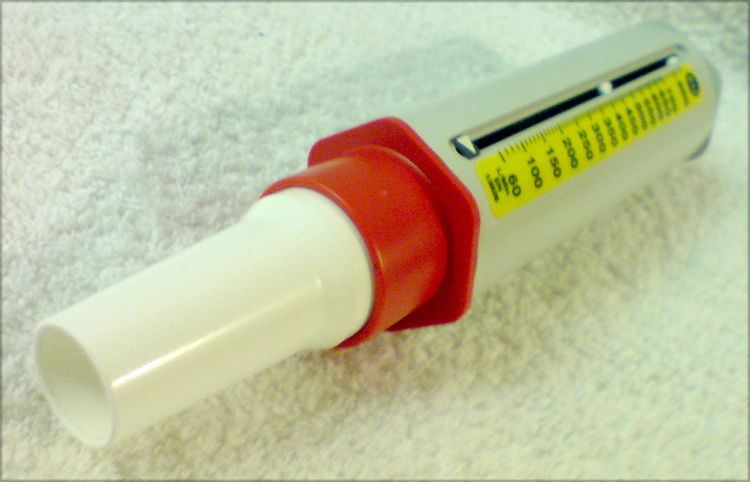MeSH D010366 | ||
 | ||
The peak expiratory flow (PEF), also called peak expiratory flow rate (PEFR) is a person's maximum speed of expiration, as measured with a peak flow meter, a small, hand-held device used to monitor a person's ability to breathe out air. It measures the airflow through the bronchi and thus the degree of obstruction in the airways.
Contents
Function
Peak flow readings are higher when patients are well, and lower when the airways are constricted. From changes in recorded values, patients and doctors may determine lung functionality, the severity of asthma symptoms, and treatment.
Measurement of PEFR requires training to correctly use a meter and the normal expected value depends on the patient's sex, age, and height. It is classically reduced in obstructive lung disorders such as asthma.
Due to the wide range of 'normal' values and the high degree of variability, peak flow is not the recommended test to identify asthma. However, it can be useful in some circumstances.
A small portion of people with asthma may benefit from regular peak flow monitoring. When monitoring is recommended, it is usually done in addition to reviewing asthma symptoms and frequency of reliever medication use.
When peak flow is being monitored regularly, the results may be recorded on a peak flow chart.
It is important to use the same peak flow meter every time.
Measurement
The highest of three readings is used as the recorded value of the Peak Expiratory Flow Rate. It may be plotted out on graph paper charts together with a record of symptoms or using peak flow charting software. This allows patients to self-monitor and pass information back to their doctor or nurse.
Peak flow readings are often classified into 3 zones of measurement according to the American Lung Association; green, yellow, and red. Doctors and health practitioners can develop an asthma management plan based on the green-yellow-red zones.
History
The measurement of peak expiratory flow was pioneered by Martin Wright, who produced the first meter specifically designed to measure this index of lung function. Since the original design of instrument was introduced in the late 1950s, and the subsequent development of a more portable, lower cost version (the "Mini-Wright" peak flow meter), other designs and copies have become available across the world.
